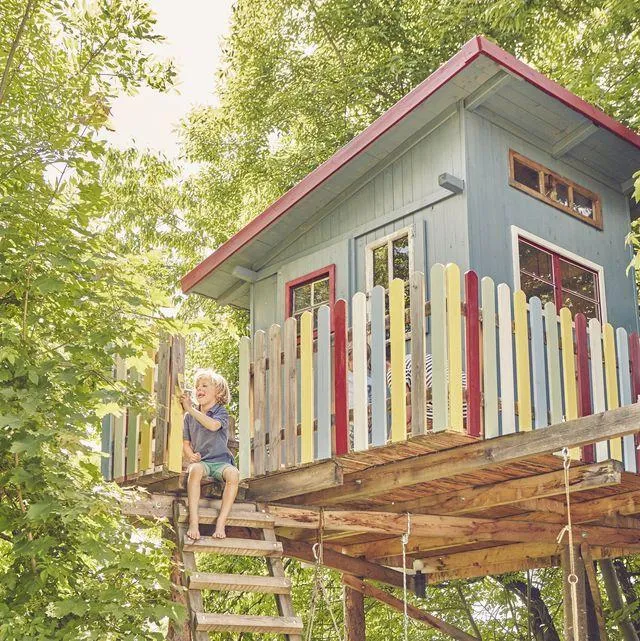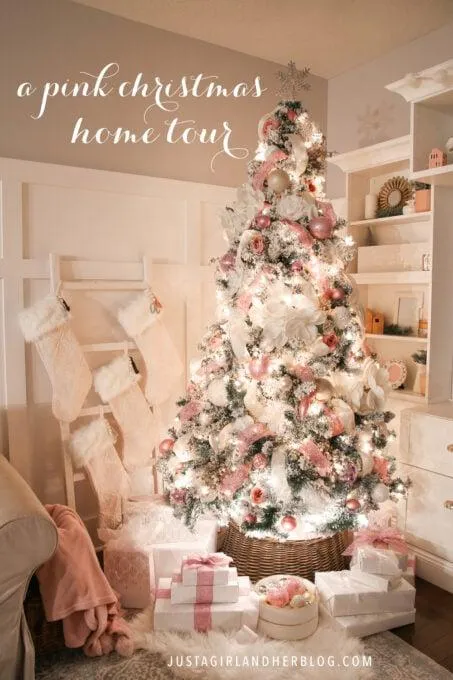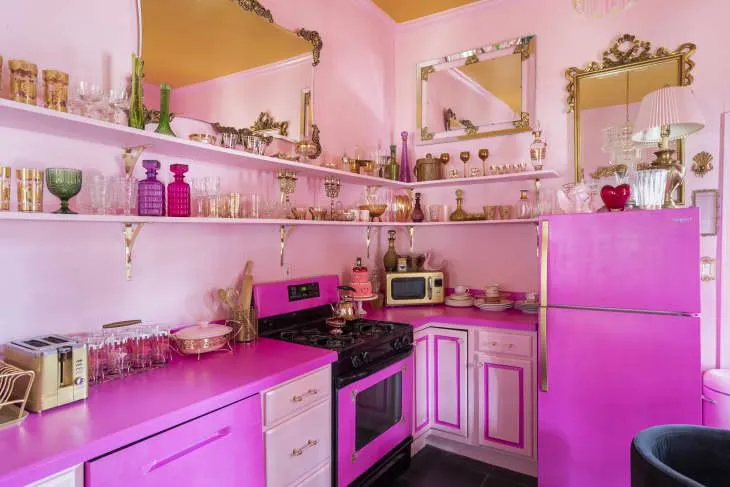Everything You Need to Know About Growing an Indoor Pink Tree
If you’re looking online for information about “indoor pink tree”, you’ve come to the right place. In this article, I’ll discuss all the different types of pink flowering trees that can thrive indoors, and provide tips on caring for them so your pink tree flourishes year-round. But first, let’s address some common questions people have when considering bringing a pink tree indoors.
Why Would I Want an Indoor Pink Tree?
There are several good reasons why a pink flowering tree makes a wonderful indoor houseplant:
- Beautiful blooms: Having a tree covered in soft pink blooms is a lovely way to infuse your home with color, especially in the winter months when outdoor trees have dropped their leaves.
- Low maintenance: Many pink flowering trees suitable for indoors are very low maintenance once established. This makes them a stress-free option for busy households.
- Air purification: Just like their outdoor cousins, indoor trees help clean the air by absorbing toxins and releasing oxygen. A respite from polluted indoor air.
- Privacy: Strategically placed in your home, a tree can provide a visual barrier or buffer between rooms, adding a sense of seclusion.
What Types of Trees Have Pink Flowers?
Here are some of the top pink flowering tree varieties suitable for growing indoors:

- Japanese maple (Acer palmatum): Available in many cultivars with pale to deep pink leaves that emerge in spring. Makes a stunning accent tree.
- Eastern redbud (Cercis canadensis): Features heart-shaped pink blooms that appear directly on its branches before its leaves in early spring. More sunlight is needed.
- Crapemyrtle (Lagerstroemia indica):Blooms in shades of light pink to fuchsia. More heat and light tolerant than other options. Disease resistant.
- Cherry blossom (Prunus serrulata): Iconic weeping branches heavy with double pink blooms in early spring. Needs a large pot and adequate chill periods.
- Tibetan cherry (Prunus serrula): Dwarf variety perfect for small spaces. Cascading branches are smothered in pink blooms. Tolerates low light.
Caring for an Indoor Pink Tree
Once you’ve selected your pink flowering tree, here are some tips for giving it optimal care indoors:
- Light: Most trees need bright, indirect sunlight for at least 6 hours daily. Adjust exposure gradually to prevent sun scorch. Consider grow lights in winter.
- Water: Water when top inch of soil is dry. Apply until it drains freely from the drainage holes. Mist leaves to increase humidity.
- Temperature: Between 65-75°F is ideal. Some trees like cherry blossoms require winter chill periods below 45°F for blooming.
- Fertilizer: Apply a balanced liquid houseplant fertilizer monthly during spring/summer. Cut back in winter when growth slows.
- Pruning: Prune dead, diseased or damaged growth. Shape trees if needed. Don’t prune crapemyrtles until after flowering.
- Pots: Use a pot at least 12 inches wide. Repot trees annually in spring using well-draining soil.
Dealing with Pests and Disease
Pink trees are generally low maintenance, but can be susceptible to the odd problem. Here are some issues to watch out for:
- Spider mites: Tiny pests that leave white speckling. Spray with neem oil or insecticidal soap. Reduce stress from overwatering.
- Scale: Sap-sucking pests appear as hard bumps on trunk or leaves. Rub off with cotton ball dipped in alcohol. Repeat every 5-7 days for 1 month.
- Mealybugs: Fluffy masses near new growth. Isolate plant and treat with systemic insecticide. Wipe leaves with alcohol as needed.
- Botrytis: Gray fuzzy spots on flowers/stems from too little air circulation. Improve airflow and don’t overwater. Prune off affected areas if mild.
Placing Your Pink Tree Around the Home
Now that you’ve chosen and cared for your pink tree, it’s time to decide where to put it in your home. Here are some placement tips:

- Near a bright window for optimal light, but avoid direct sun on leaves which can scorch them.
- In the kitchen nook provides great ambiance while you cook and offers plenty of humidity from cooking.
- Along a bedroom window to wake up surrounded by sweet floral fragrance, if it’s a scented variety like cherry blossom.
- By the entryway or living room to add a pop of vibrant color that greets you as you walk inside.
From my experience, pink flowering trees are low-fuss plants that bring beauty, nature and serenity indoors. I hope this guide has answered any questions you had about growing and caring for an indoor pink tree to enjoy its pretty blooms all year long. Feel free to ask me anything else you need to know!
Factors to Consider When Choosing an Indoor Pink Tree
| Tree Type | Size | Light Requirements | Water Needs | Bloom Period |
|---|---|---|---|---|
| Azalea | Small to Medium | Bright Indirect Light | Keep Soil Moist | Spring |
| Poinsettia | Medium | MediumIndirect Light | Allow Soil to Dry Slightly | Winter |
| Camellia | Medium to Large | BrightIndirect Light | Keep Soil Evenly Moist | Winter to Spring |
| Flowering Quince | Small to Medium | Full Sun to Partial Shade | Water Thoroughly, Then Let Dry | Spring |
FAQ
-
Why are indoor pink trees popular?
Many folks enjoy the attractive appearance of pink trees indoors. Their bright blooms kinda lift people’s mood. I guess pink has a calming effect for some.
-
What kinds of pink trees are commonly grown indoors?
Some regularly seen pink indoor trees are poinsettias and azaleas. Poinsettias seem to sprout those awesome holiday colors around Christmastime, if you know what I mean. Azaleas literally explode with a ton of soft pink flowers. These probably remind folks of nicer spring weather.

-
How difficult are they to care for?
Believe it or not, pink indoor trees aren’t exceptionally tough to maintain. You just need to water them regularly enough to keep the soil moist, but not soaked. Also provide decent lighting, maybe near a window. Feed them monthly during the growing season. Seems easy enough, right? But don’t quote me – I kill houseplants like nobody’s business!
-
Do the flowers bloom all year?
Now this is where things can get a bit funky. Indeed, some pink indoor trees continuously pump out blooms throughout the year. However, a lot depends on factors like temperature and light levels. For example, poinsettias may stop their spectacular show around spring. But azaleas can carry on with blooms for quite a while, if circumstances are ideal. You just never quite know for sure, I guess!
-
What kind of atmosphere do they create?
By all reports, pink indoor trees have a marvelous way of jazzing up a room. Their bright, cheerful blooms pump positive energy into the air, based on what folks tell me. It’s like a soothing splash of nature indoors. Perhaps they’re splendid for enhancing relaxation. One of my old neighbors used to say pink trees worked better than any medication! Who am I to argue with that?

-
Do they need full sun or can they tolerate low light?
When it comes to lighting, pink indoor trees have varying needs. Most do appreciate sufficient illumination. However, some varieties can kinda endure low-light spots better than others. Azaleas probably demand the most sun. Poinsettias and orchids might handle lesser light fairly well, if positioned properly. Anywho, experiment and observe how yours reacts. Move it if the blooms start looking lackluster.
-
Are there any pests to watch out for?
Sadly, pink indoor trees aren’t entirely pest-free. Not to send shivers down your spine, but keep an eye peeled for typical irritants like spider mites, aphids, and scale insects. Ugh, just thinking of those critters gives me the heebie-jeebies. If bugs appear, immediate quarantine and treatment are the best bet. You snooze, you lose – and nobody wants a leaf-sucking free-for-all in their home, am I right?
-
In summary, what are the top benefits of keeping a pink indoor tree?
To wrap things up, the foremost pros seem to be aesthetic enrichment and mood enhancement. Their attractive blossoms just radiate positive vibes. Pink indoor trees also add a neat natural element inside. Plus, caring for them might benefit stress relief or something. All in all, not a bad investment for beautifying your environment. If pink floating blooms sound lovely to you, give one a try!
